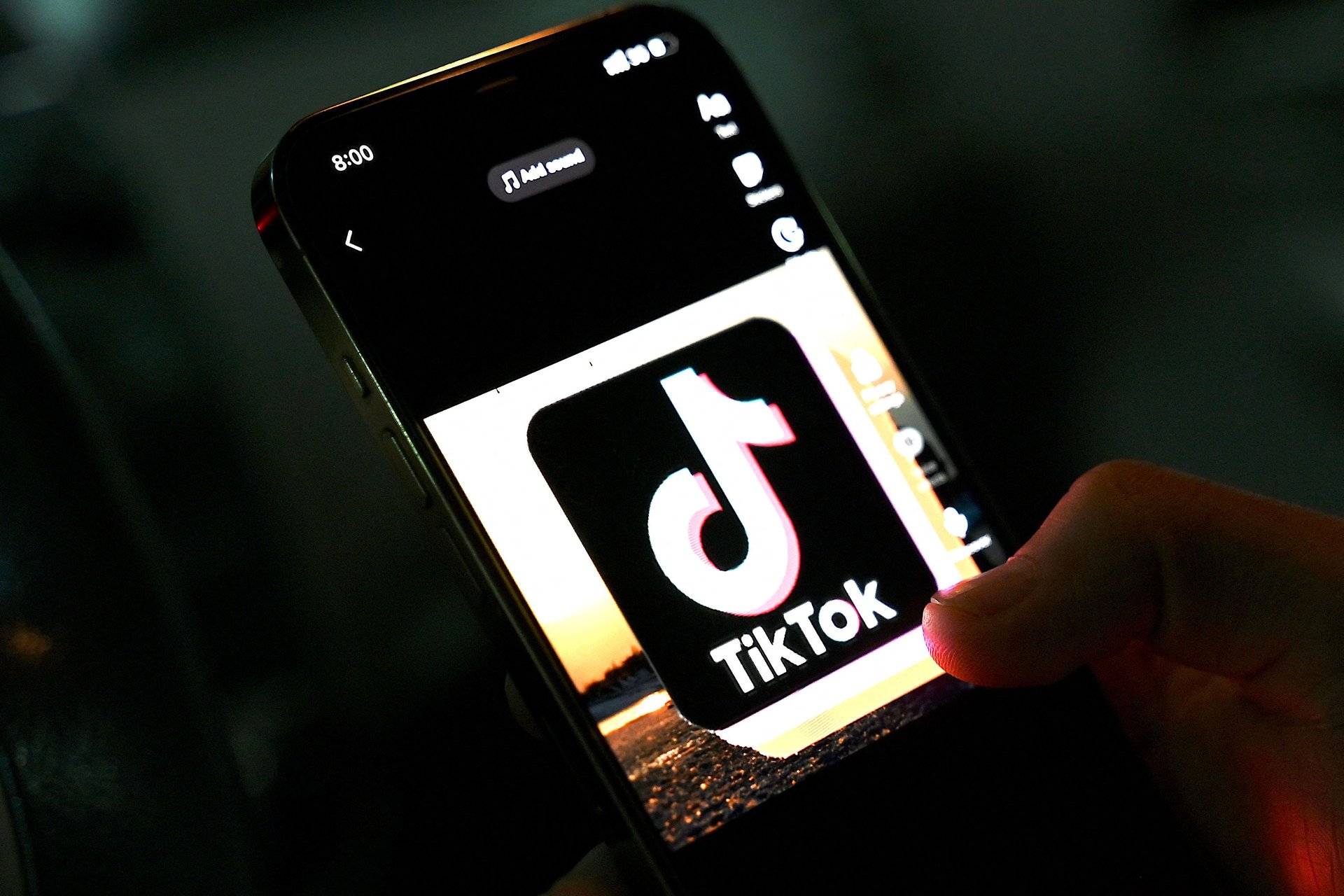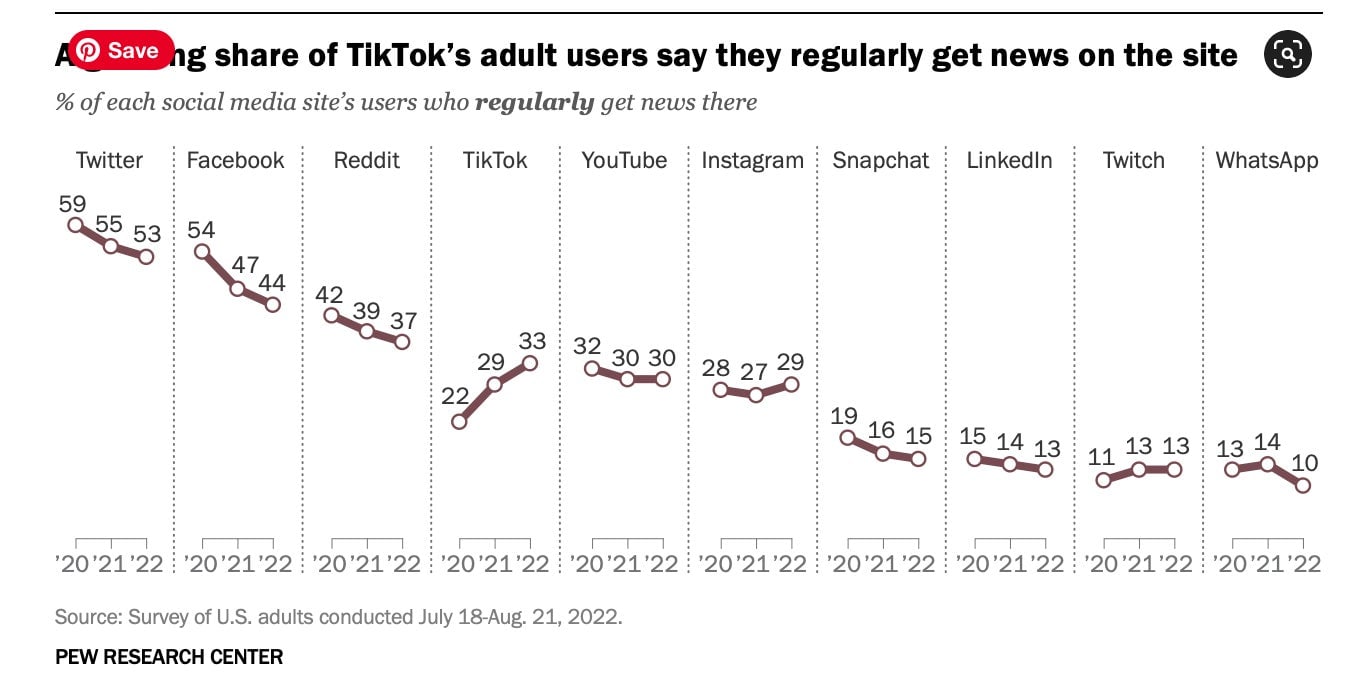A quarter of US adults under 30 now get their news from TikTok
China's social video app is an increasingly popular source of news

TikTok is where millions of Americans go to watch choreographed dance videos, cooking demonstrations, and someone on a skateboard drinking cranberry juice. It’s also the place where more and more young Americans get their news.
Among American adults, reliance on TikTok for news content has roughly tripled since 2020, rising from 3% to 10% in the past two years. More than a quarter of US adults under 30 now regularly use TikTok for news, according to a new study from the Pew Research Center. This defies a larger national trend. Fewer Americans are consistently looking for news on social media, especially Facebook, Twitter, Reddit, and Snapchat, according to Pew data since 2020.

Pew may even underestimate the Chinese platform’s influence over US news consumed since it did not survey tens of million TikTok users under 18. Nearly two-thirds of US teenagers between ages 12 and 17 use TikTok, an even higher share than the 57% who report using Instagram.
TikTok’s political controversy
TikTok rocketed to social media dominance after launching in 2016, attracting more than 1 billion users within a five-year period (it took Facebook more than 10 years to reach that milestone). Today, TikTok, and its Chinese parent company ByteDance, are thriving despite losing access to its largest market, India, over military tensions between China and India, as well as escalating US government concerns over national security and data privacy (worries bolstered by recent reports that US user data is being accessed from mainland China).
Despite its popularity, TikTok is often not a reliable source of news. Like many other platforms, TikTok is rife with conspiracy theories, political misinformation, and health misinformation. It has also faced rising criticism about how it moderates content. Reports have indicated that it has blocked content critical of the Chinese government, including posts about the Hong Kong pro-democracy protests, the Tiananmen Square massacre, and Tibetan independence. TikTok’s chief operating officer recently assured US senators that no executives at the company have ties to the Chinese Communist Party, but major tech companies in China are increasingly subject to dictates from Beijing’s ruling party, including companies’ proprietary search and discovery algorithms.
News outlets want TikTok’s young audience
TikTok’s role in news distribution is still evolving, says Andrew Grant, a spokesperson for Pew. For now, a higher share of Twitter’s audience still relies on the platform for news (53%), while only 33% of TikTok users rely on it for news, comparable to Reddit (37%) or YouTube (30%).
That hasn’t stopped US news organizations from flocking to TikTok to reach a new audience. The Washington Post was one of the first major US news organizations to have a TikTok presence in 2019. For now, the Post’s TikTok account is mostly a way to familiarize young people with the newspaper, said senior video reporter Dave Jorgenson, in 2019, delivering jokes and commentary on the news.
But others are treating it more like just another way to deliver the news, condensing their content into the platform’s trademark short, bite-sized video clips. The New York Times’ Jamelle Bouie, CNN’s Max Foster, and BBC’s Victoria Derbyshire read the news or give political analysis on the app. NBC News produces a show called “Stay Tuned for TikTok.” NowThis has a robust presence covering of a wide variety of news topics.